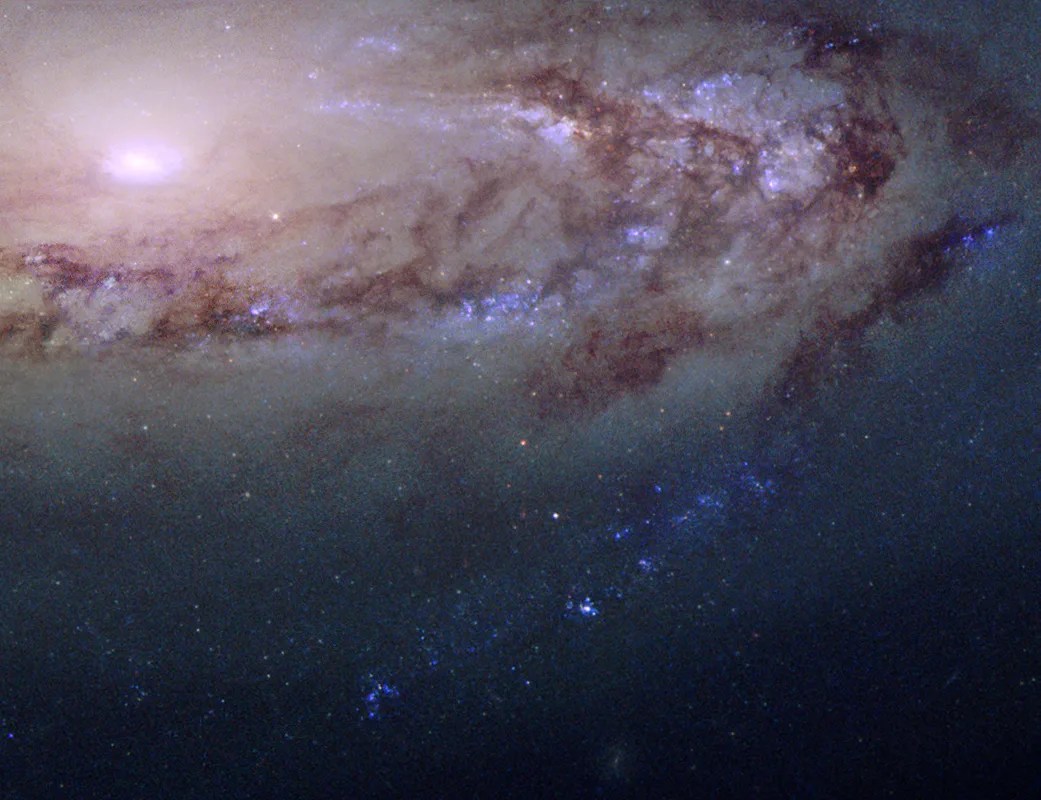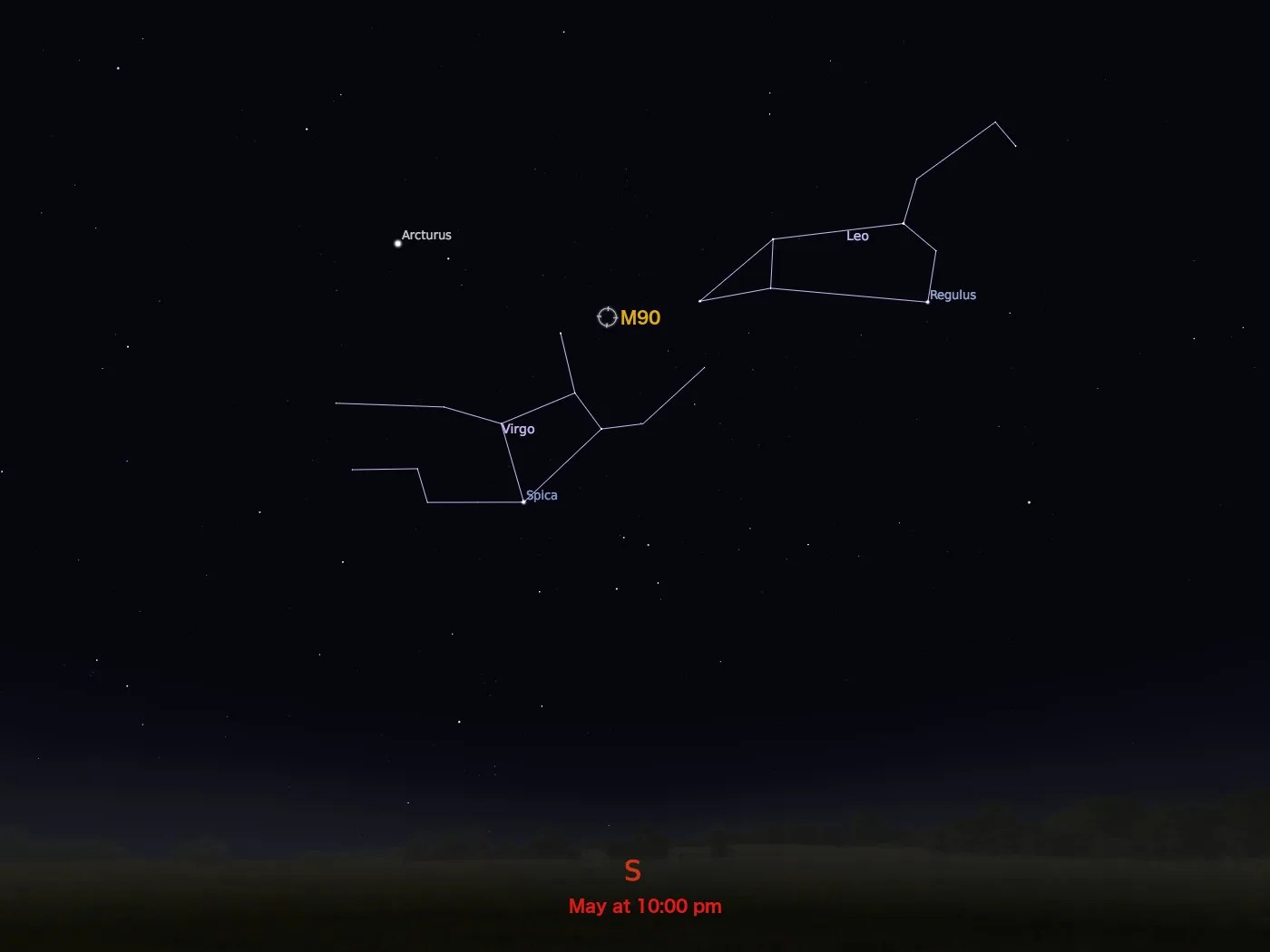Messier 90
This beautiful spiral is expected to evolve into a lenticular galaxy.
Distance
59 million light-years
Apparent Magnitude
9.5
constellation
Virgo
object type
Spiral Galaxy

M90 is a bright, beautiful spiral galaxy situated in the Virgo cluster of galaxies. Located in the constellation Virgo, this galaxy is approximately 59 million light-years away from Earth and has a magnitude of 9.5. M90 is believed to be breaking away from the rest of the galaxies in the Virgo cluster and is one of the few galaxies traveling toward our Milky Way galaxy, not away.
Charles Messier found M90 in 1781 while looking at other galaxies in the Virgo cluster. M90 contains approximately a trillion stars and a thousand globular clusters. With the exception of the inner disk region, the galaxy’s arms contain very little star formation. Interactions with neighboring galaxies likely stripped away the gas and material that M90 needs to have active star formation in its outer regions. In the future, M90 is expected to evolve into a lenticular galaxy, which is a galaxy that has qualities of both a spiral and an elliptical galaxy.
This Hubble observation was taken in infrared, ultraviolet and visible light with the telescope’s Wide Field and Planetary Camera 2. Less than half of the galaxy is visible in this image. Astronomers used these Hubble observations to help study the properties of galactic bulges and the cores of nearby galaxies.
The best time to view M90 is in May. It can be seen with binoculars in a clear, dark sky, and telescopes (especially larger ones) will begin to reveal more details of the galaxy, such as its arms and bright core.
For more information about Hubble's observations of M90, see:

Explore Hubble's Messier Catalog
The following pages contain some of Hubble’s best images of Messier objects.




